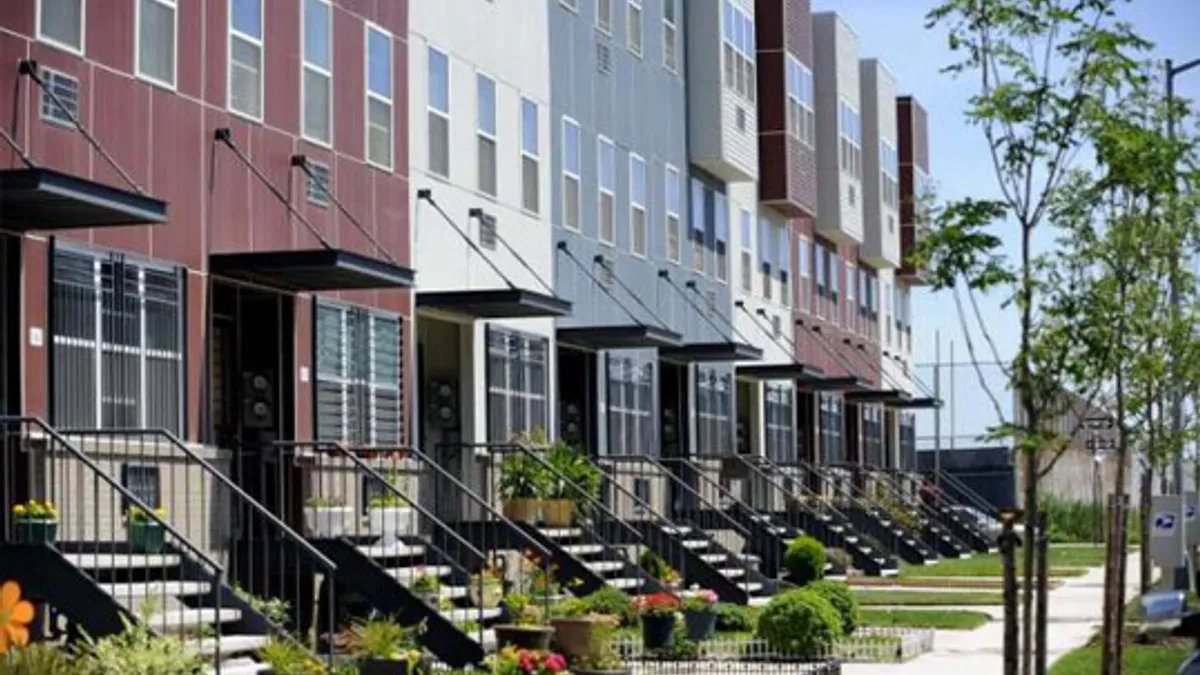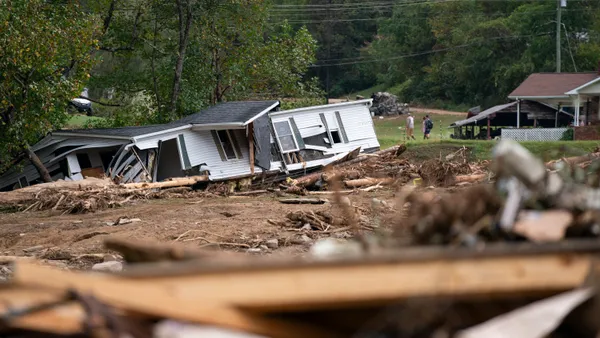Dive Brief:
- There are 15 metro areas across the country on the verge of a housing crisis based on how their markets have performed since the housing bubble burst a decade ago, according to an analysis by 24/7 Wall St. The metro areas of Greeley, CO; Denver; Fort Collins, CO; Austin, TX; and Nashville, TN are the top five most at risk.
- Home values in the 15 cities are believed to be rising too high and too quickly, at an unsustainable rate. Current median prices in these cities are at least 20% above their pre-recession peak, although some of them are 50% higher.
- The analysis examined median prices in 123 metro areas. It does not claim to predict a housing bubble in certain cities, but indicators suggest that the 15 cities could be the most vulnerable to hardships if an economic slowdown occurs in the coming months.
Dive Insight:
The analysis says that year-over-year growth in home value typically is considered healthy. But problems arise and the housing market can become unstable when too much growth happens too quickly. It says in some cities the rate of home value growth could prove "disastrously unsustainable."
Home prices have risen sharply in the 15 listed cities because they're attracting new residents and have growing job sectors. But growing housing demand can bump up prices and make housing less affordable, also making an area's overall cost-of-living higher.
The 24/7 Wall St. analysis illustrates that cities of all sizes can suffer from housing affordability problems. Greeley, CO, a city of about 105,000 people but 25% population growth, topped the list and other small cities such as Provo, UT (117,000 people) were listed as well. Other analyses similarly have warned that housing affordability is no longer a problem exclusive to big cities, so small and mid-sized cities should take measures to prevent a housing market collapse.
These cities might not have anticipated rapid population growth and housing price increases and therefore might have to do catch-up on researching and implementing programs to fix the problem. But taking a regional, collaborative approach to problems that don't see borders, such as housing affordability or climate change, can help.
Leaders in Salt Lake City — a city of about 200,000 people that also made the housing crisis risk list — took that approach when they passed a housing plan in December 2017 largely focused on creating more affordable housing. They encouraged neighboring cities to do the same because Salt Lake City cannot take care of the entire region's affordable housing needs alone.
Interestingly, the analysis includes cities that are already widely considered to be experiencing a housing crisis, not on the verge of one, such as No. 15 Seattle and No. 6 San Jose, part of the notoriously high-priced Silicon Valley. Those areas are known for their rapid tech sector expansion and the housing affordability trouble that has ensued in recent years.
Being aware of the problem has led both areas to undertake mitigation measures and actively seek new ones to curb sharply rising housing prices and increase housing capacity. Last month Seattle Mayor Jenny Durkan sent affordable housing legislation to the city council for consideration, following her move in February of signing an executive order to create more affordable housing. Still, these cities' experiences show how difficult it is to get a handle on housing affordability once it goes awry.











